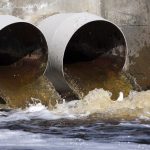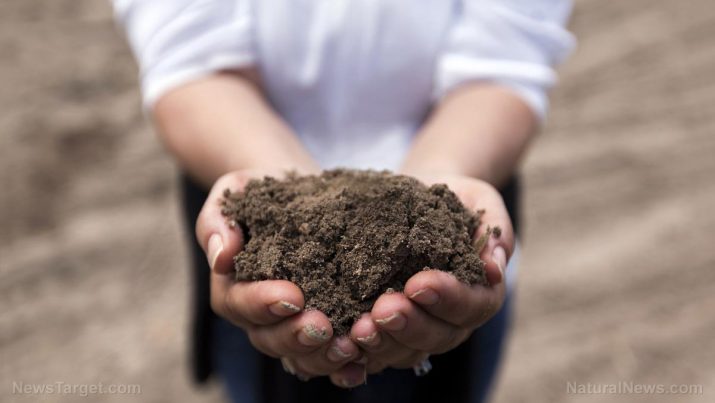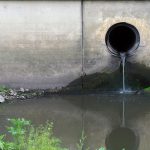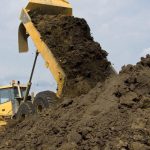
Toxic “forever chemicals” found in fertilizers made from sewage sludge
Thursday, June 10, 2021 by Divina Ramirez
http://www.biosludge.news/2021-06-10-pfas-found-in-fertilizers.html

Toxic “forever chemicals” seem to be everywhere these days, from drinking water sources to breast milk. Now, it appears that the chemicals, also known as per- and polyfluoroalkyl substances (PFAS), have also found their way into fertilizers, according to a report published last month.
The report was written by researchers from the Ecology Center and the Sierra Club, who found that certain fertilizers made from biosolids – nutrient-rich, organic materials derived from sewage sludge – contained PFAS. Some of the fertilizers tested also had PFAS levels that were higher than the limit set by the state of Maine, which currently has the toughest regulations for PFAS concentration in agriculture in the country.
Sewage sludge, marketed as “biosolids,” is a mixture of treated wastewater and human waste. Sewage sludge is full of nutrients that plants need to grow, including nitrogen and phosphorus, which is why it is widely sold as fertilizer.
But the finding that some fertilizers made from biosolids are contaminated with PFAS raises serious concerns, mostly because PFAS exposure has been linked to serious health problems. These include neurological conditions, birth defects and cancer.
Spreading fertilizer made from sewage sludge in soil used to grow plants meant for consumption means plants could take up some PFAS chemicals. If the plants are consumed, that’s a direct route into the body, said Gillian Miller, a co-author of the study and a senior scientist with the nonprofit group Ecology Center.
The report hasn’t been peer-reviewed yet. However, independent researchers who reviewed the report for The Guardian said its methodology is sound.
PFAS found in fertilizers made from sewage sludge
The researchers tested nine fertilizers containing biosolids for 33 different types of PFAS. They purchased the fertilizers at nationwide chains like Lowe’s, Ace Hardware and The Home Depot in several states, including Maine and Michigan.
They found up to 24 types of PFAS in at least one product. Each fertilizer had between 14 to 20 types of PFAS. The fertilizers tested include:
- Cured Bloom
- TAGRO Mix
- Milorganite 6-4-0
- Pro Care Natural Fertilizer
- EcoScraps Slow-Release Fertilizer
- Menards Premium Natural Fertilizer
- GreenEdge Slow Release Fertilizer
- Earthlife Natural Fertilizer
- Synagro Granulite Fertilizer Pellets
Eight of the nine fertilizers also had PFAS levels above Maine’s advisory screening limit for PFAS in biosolids. The researchers also tested the fertilizers for total organic fluorine, an indicator of PFAS contamination. They found that the fertilizers had up to 233 parts per billion (ppb) or total organic fluorine, similar to the levels of total organic fluorine in fish caught in polluted water.
The levels of total organic fluorine found in the fertilizers were also thousands of times higher than levels regulated in drinking water.
It’s also worth noting that most of the fertilizers tested for PFAS are listed as natural or have labels that imply they are eco-friendly, even when that is evidently not the case. Sonya Lunder, senior toxics advisor for the Sierra Club, said labels on fertilizers made from biosolids sometimes have misleading terms, such as “natural” and “eco.” Some companies would even use “organic” in their brand’s name.
But as the evidence clearly shows, some fertilizers made from sewage sludge can contain persistent chemicals, said Lunder. Additionally, Miller said words like “natural” and “eco” have no legal definition. Therefore, brands can put those on their labels even if their products are not actually made from eco-friendly or all-natural ingredients.
Now that there’s evidence of PFAS contamination in some fertilizers made from biosolids, consumers need to avoid these products altogether.
“Every week, we learn of another way that PFAS chemicals contaminate our bodies and the environment around us,” Linda Birnbaum, former director of the National Institute of Environmental Health Sciences and National Toxicology Program, said in the press release. “Enough is enough.”
Birnbaum added that the Environmental Protection Agency (EPA) needs to take immediate action to prevent the reckless contamination of food, water, soil and air by limiting the use of PFAS in fertilizers and other products. (Related: US scientists detect MORE THAN 50 chemicals from everyday products in pregnant women and newborns.)
In the meantime, home gardeners can protect themselves from the adverse health effects linked to PFAS exposure by avoiding fertilizers containing biosolids.
Learn more about the use of sewage sludge as fertilizer at BioSludge.news.
Sources include:
Tagged Under: Tags: badhealth, badpollution, Biosolids, Ecology, environment, Fertilizers, forever chemicals, PFAS, PFAS contamination, research, sewage sludge, toxic chemicals
RECENT ARTICLES


UK wastewater plants allowed to dump untreated sewage due to shortage of chemicals

Australian government imposes new coronavirus lockdowns after falsely claiming sewage poop tested “positive”
By Ethan Huff

LA treatment plant discharges 17 MILLION gallons of sewage
By Ramon Tomey

STUDY: Corporations are destroying our planet’s soil
By Ethan Huff
COPYRIGHT © 2017 BIO SLUDGE NEWS


